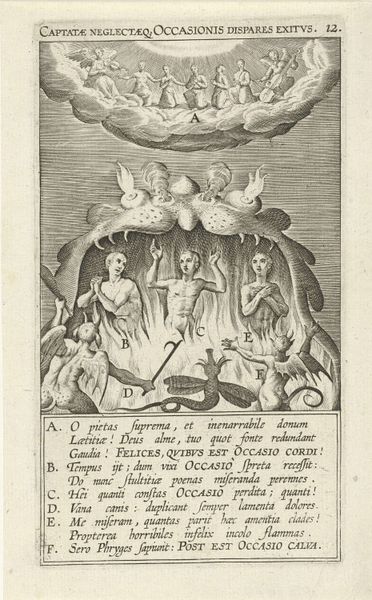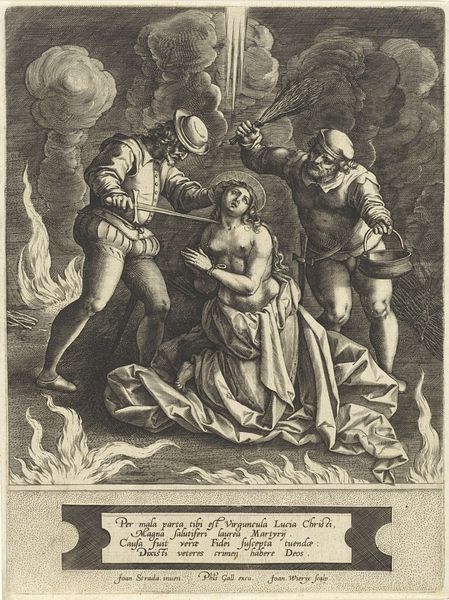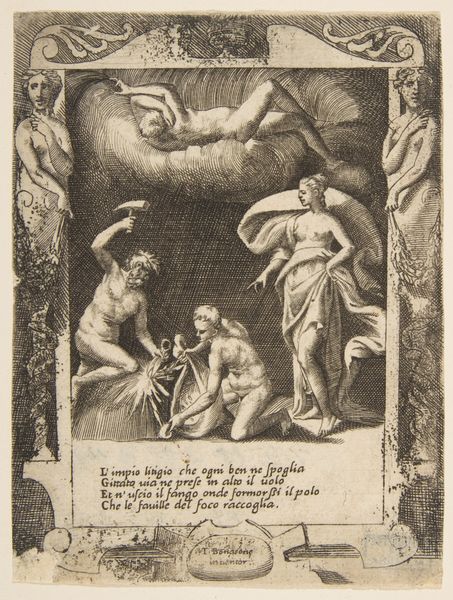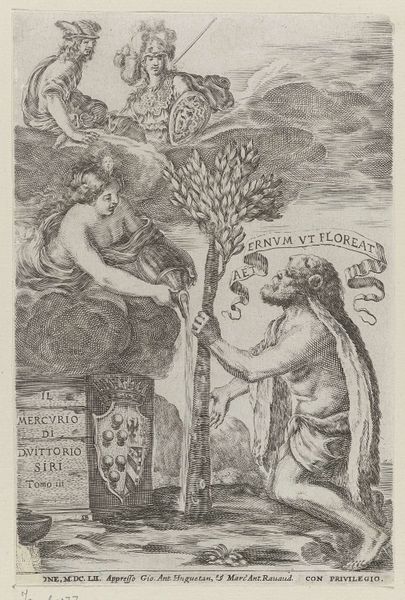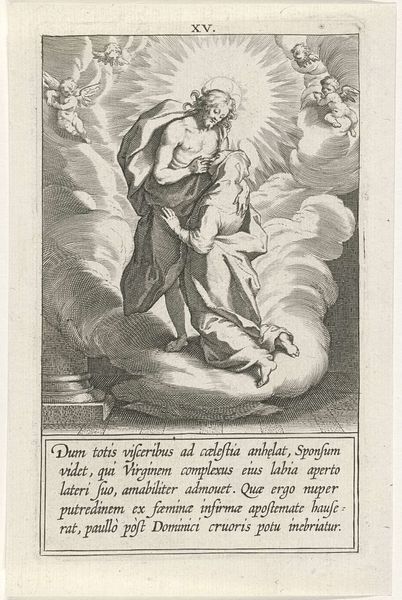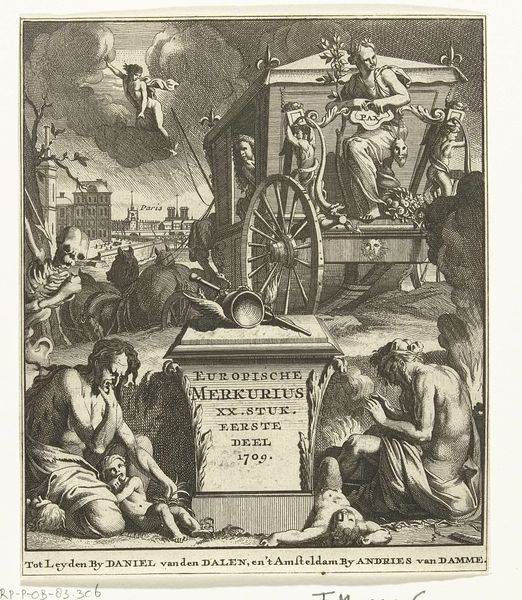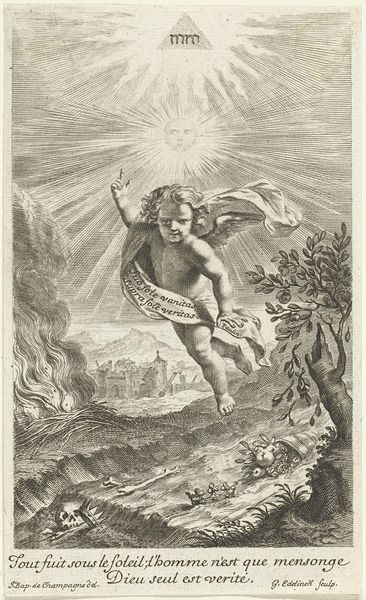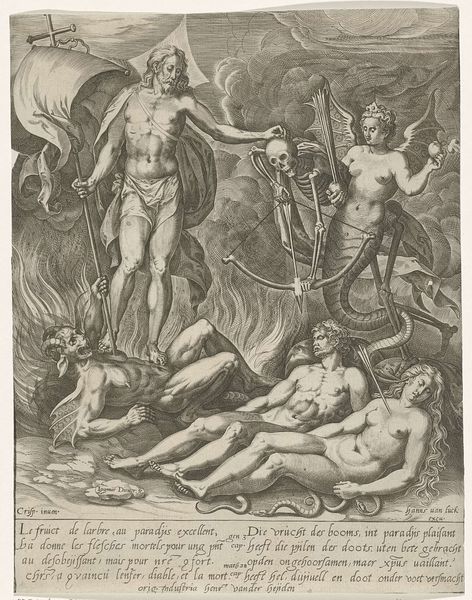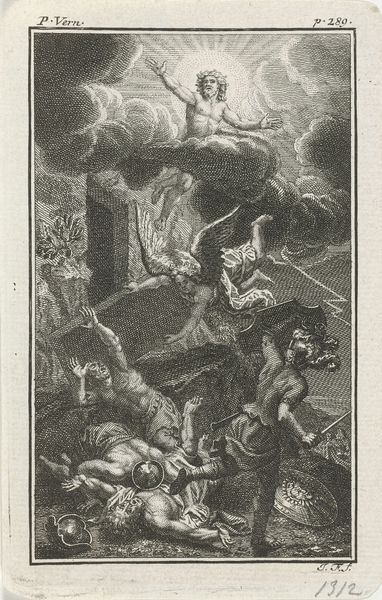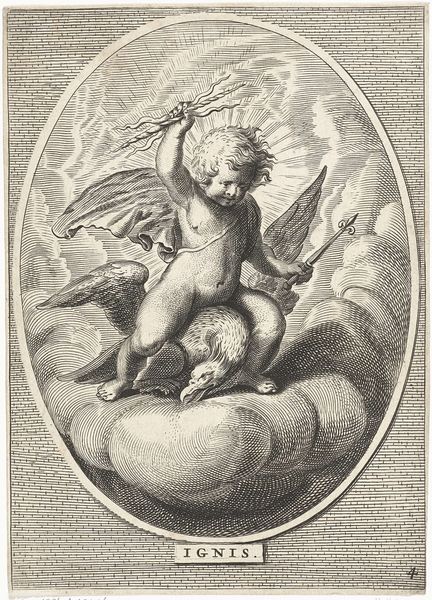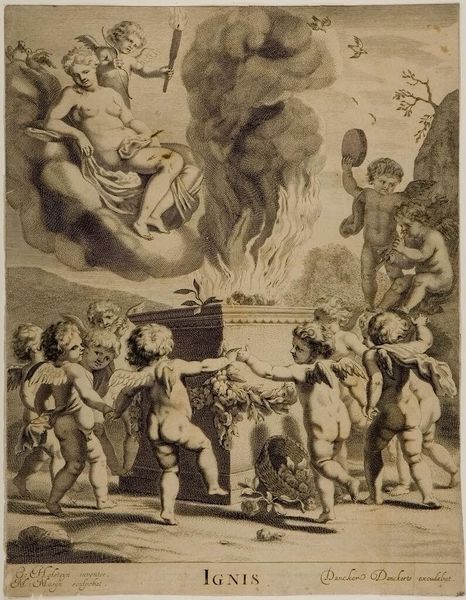
Twee engelen bidden bij vuur met ongeschonden hostie 1590 - 1639
0:00
0:00
print, engraving
#
allegory
#
baroque
# print
#
old engraving style
#
figuration
#
pen-ink sketch
#
engraving
#
miniature
#
columned text
Dimensions: height 133 mm, width 83 mm
Copyright: Rijks Museum: Open Domain
Curator: Boëtius Adamsz. Bolswert created this engraving titled "Two Angels Praying by Fire with an Unscathed Host" sometime between 1590 and 1639. It's currently held at the Rijksmuseum. Editor: The first thing that strikes me is the theatrical intensity of the image. There's a real sense of drama here, accentuated by the cherubic angels and the prominent fire dominating the composition. Curator: Indeed. Bolswert was working within the Baroque style, which prized heightened emotion and dynamic movement. What might be missed at first glance is how this image plays into complex religious and political tensions. The unharmed host, center stage, is pivotal here. It is a clear symbol, and would have carried charged meaning during this period. Editor: Right, and this print's availability for circulation highlights how images functioned in religious debates. Considering the power dynamics inherent in its display and ownership adds another layer of context, don't you think? How would its message have been received differently across various socio-economic groups? Curator: Absolutely. The use of allegory is strong. The miniature scale makes it almost jewel-like in its impact, suggesting preciousness and hidden meanings revealed through close observation. What do you make of the framing text, both in Latin and the vernacular? Editor: The text solidifies the print's propagandistic intention. The use of both Latin and the vernacular suggests the image was geared toward distinct audiences. Latin primarily catered to educated and clerical individuals. While the local language widened viewership considerably. This strategy ensured accessibility while reinforcing doctrinal ideals across different social stratums. Curator: So, in essence, Bolswert has masterfully utilized allegory and dramatic composition to present very pointed viewpoints. It speaks volumes about the politics of imagery, particularly in the Counter-Reformation era. Editor: Yes, reflecting on how seemingly simple prints contributed significantly to religious identity, cultural perceptions and even potentially social reforms, helps us to rethink art’s societal implications. Curator: For me, delving into this print highlights the significance of art as an expression of power, revealing underlying tensions that continue to resonate through history.
Comments
No comments
Be the first to comment and join the conversation on the ultimate creative platform.
